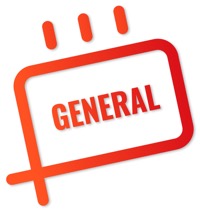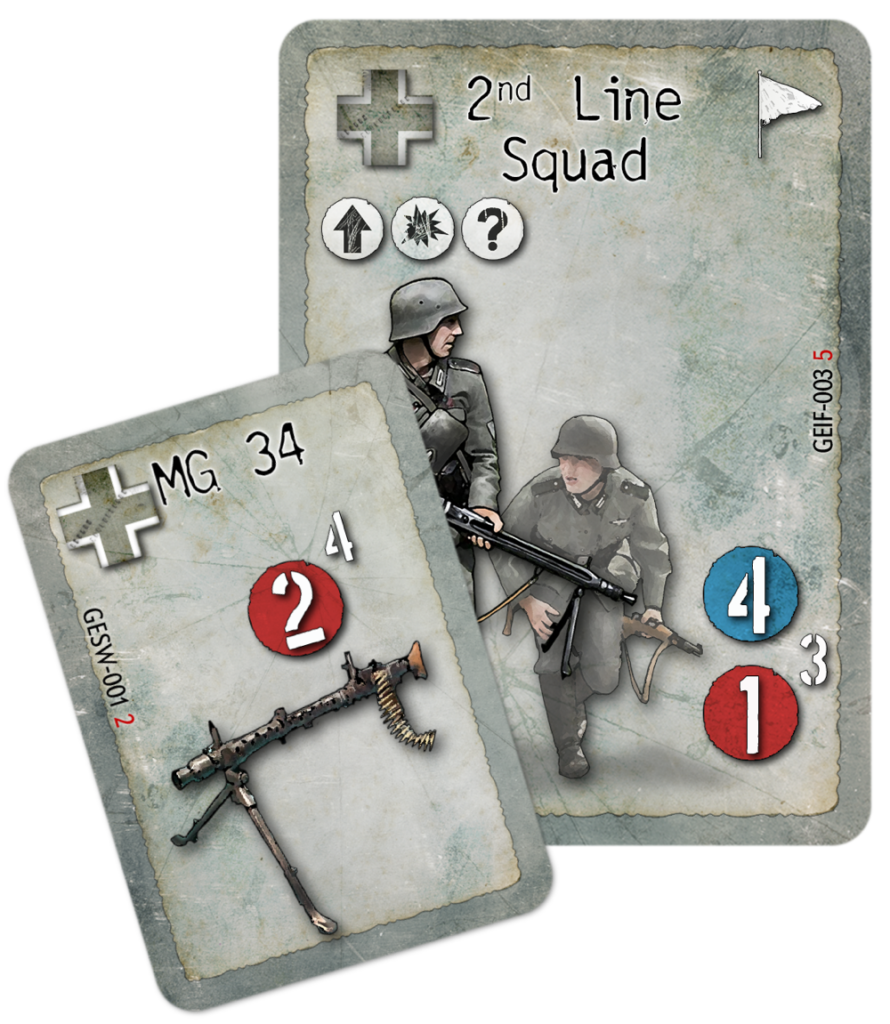 Getting your kit together – Point Blank
Getting your kit together – Point Blank

Point Blank – V is for Victory is the latest game from Lock ‘n Load Publishing and it comes with a sizeable number of cards. The majority of the game box is space for cards and when you open the box and pull out the rulebooks, counters and play aid sheets you are confronted with more than 700 cards. This probably seems like quite a lot (and it is) but luckily for us you don’t really need all of them to play a game and the majority of them can be safely tucked away until they are called for in a scenario. So lets have a look at all of the components see what they are for and then discuss some ways to organize them and keep them in a state that makes it easy to play the game.
System cards and unit cards
The core breakdown of cards in the game are system cards, the Terrain and Action cards, and unit cards which represent the troops on the battlefield.
Unit cards
Troops and equipment come in two sizes. The squad and vehicle cards come in the standard 2.5″ x 3.5″ (63 x 89mm) Magic/Poker size and the Leaders and Support Weapons come in a 1.75″ x 2.5″ (45 x 63mm) Mini format that you may be familiar with from the X-Wing game.

The game has Squads, Half-squads, vehicles, Leaders and Support Weapons. The latter two are in the smaller Mini format cards. The type and number of each that you need are specified by the scenario and so you only have to gather them when you are setting up a game. You will also need to have access to the Half-squad cards in case your squads are wounded.
System cards
The system cards are used to build the game space, to track Smoke and Blazes and to be used to determine Actions and die rolls. These cards are used throughout the game and are going to be in easy reach.
Action cards
The game has a large stack of Action cards that are used for three purposes.
- They are pulled from the deck for die or dice rolls
- They are used by the player to initiate actions
- They are a turn counter that determines when a turn is over
These need to be right next to your play area and easy to access by both players as they will be pulling from the deck to build their hand and for dice rolling all through the game.
Note: there are two Action cards with a 1 die face and no actions on them. Put these aside as they are used to replace the Sniper card after it has been activated.

Terrain and Objective cards
Terrain and Objective cards are similar cards in that they describe the physical characteristics of a Sector in the game but Objective cards are typically only deployed when setting up the game. Terrain cards are frequently accessed during the game and need to be set aside in a stack where each player can access them. Objective cards are a different colour and have a different card back which makes it easy to differentiate them from Terrain cards.

On page 72 of the Core Rules is a list of Terrain cards that are in the default Terrain deck. These 70 cards can be separated from the rest of the Terrain cards. And additions or subtractions from the default deck will be listed in the scenario which means that you can safely store the rest of the Terrain cards elsewhere as you will only need them during game setup.
Other system cards
There are three other system cards that you will need easy access to
- Blaze
- Smoke
- Wreck
The Blaze and Smoke cards are Mini sized cards that are at the bottom of the stack of Leader and Support Weapon cards. The Wrecks are standard sized cards that are in one of the packs of unit cards.

These should all be separated from the other cards are put somewhere you can access them when they are needed.
Sleeves
The first issue that you may want to examine is the decision to sleeve the cards or not. There are two factors that have to be taken into account. The first is whether you can get access to Mini sized card sleeves. The second is if you want to sleeve 640+ Magic sized cards.
I am not entirely sure if all of the cards in the game require sleeving. The unit cards are not frequently used and most likely won’t generate a lot of wear over the course of the life of the game. The Action and Terrain cards will get handled a lot and will probably benefit from being sleeved. I happened to have a number of sleeves available from when I used to play Magic the Gathering and so I put all of the terrain, objective and Action cards in sleeves. I also sleeved the Wrecks and the Blaze and Smoke cards.

Organizing it all
If you are the handy type you should check out Andrea Cantatore’s DIY Point Blank game organizer. His plan uses foam board to build an organizer that fits into the Point Blank box and it includes dividers to make accessing individual cards easier. I, sadly, am not the type of person who should be allowed near sharp knives and glue and so I have a bulkier method to help organize my Point Blank components.
System cards
I have sleeved all of the Action, Terrain, Objective, Smoke, Blaze and Wreck cards. These will all get quite a bit of handling, especially the Action cards, and so need sleeves to keep them from wearing down. I pulled out the cards that I needed for the default terrain deck and placed them in a card box. The Action cards were also put into a card box. I have a few that I picked up from Fantasy flight Games’ organized play events but you can also get them from companies such as Ultra Pro. Any store that sells Magic the Gathering cards will stock card cases of varying sizes that you can use.
The Blaze, Smoke and Wreck cards are loose in my Point Blank box in the, now empty, sections that the poker sized cards were shipped in. The remaining Terrain cards as well as the Objective cards are stored in a binder with the unit cards.
Unit cards
Having suffered from playing a large number of Fantasy Flight Games’ Living Card Games I have several Ultra Pro card binders that I use to store cards in. Each page of the binder has nine slots on the front and back each of which comfortably holds three or four cards. Each type of squad in the game has ten cards and there are ten for each type of half-squad. The cards are arranged by nation (US, Germans, British and Canadians) with the infantry first and then the vehicles.
I have no easy way, at the moment, to store the Mini sized cards so they are currently still in the box slot they shipped in. There are card binders for the Mini sized cards but they tend to be aimed at X-Wing gamers and so may be a bit more difficult to find.
Counters
All of the counters easily fit into a single counter tray. My deep bottom trays are being used for World at War 85 so I used one of the ‘thinner’ trays that I picked up at my FLGS. Point Blank doesn’t have a lot of counters so almost any tray will do. It fits nicely into the box.
DIY
There are quite a few different ways that you can organize your own Point Blank game. The important thing is to know what elements you are going to need every game and make it easy to access them. Andrea Cantatore’s Point Blank game organizer is one very good way to put everything into one box. I tend to use the bits and pieces that I have in my gaming collection to help get my games sorted and ready to play. When dealing with a card game like Point Blank it never hurts to head to your local Magic store and see what sort of sleeves, boxes and binders they have available and see what options they provide you.

If you have a way of organizing your Point Blank game why not post a link to it in the Comments?

You must be logged in to post a comment.